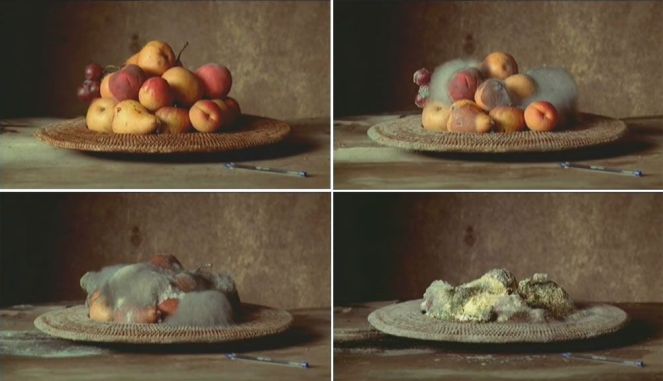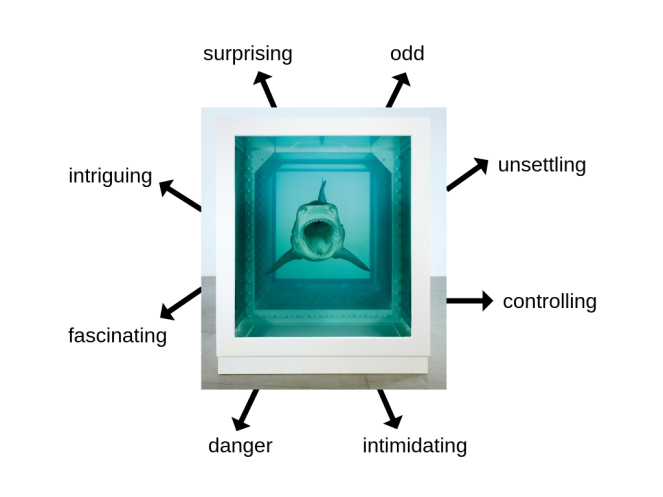Looking back at the various artwork I’ve encountered in this section, here are some final questions I was prompted to think about:
Have you been surprised by your responses to any of the works in Part One? Have you felt inspired by any of the works you’ve looked at?
The Physical Impossibility of Death in the Mind of Someone Living, Damien Hirst –
I was surprised by the depth of contemplation this piece allowed, I knew it linked to the theme of death but I was able to look at it from new perspectives. For instance, the idea of mortality and trying to stop or control time is something I find interesting and without this piece, it might not have been something I’d have considered properly.
A Place Beyond Belief, Nathan Coley –
At first glance, this piece seemed quite simple, yet I was surprised by the importance the message actually holds. Looking further into the context and specifically the origin story I realise that Coley designs his site-specific work for those who need it most. I’m really interested in the power that a phrase can have on a population that may have given up hope and therefore was also inspired by this piece. I think he should be commended for his methods in pushing boundaries and commenting on controversial topics as it promotes others to contemplate them more.
Longplayer, Jem Finer –
This piece can certainly be described as being ambitious, I hadn’t even fathomed the idea of a piece of music being played continuously for a year, let alone 1000 years before coming across Longplayer. It’s such an unusual representation of time but holds great significance in relation to how things change as time passes. What’s even more interesting and surprising is the fact that we’ll never know if Finer’s experiment is a success, but regardless of that, the attempt is definitely inspiring.
Vatnajokull, Katie Paterson –
Like Longplayer, this piece is an experience and was really intrigued by Paterson’s exploration into essentially making it interactive. Setting up a phone number to bring a sense of place to people across the world is a very clever idea and something I find inspiring. Furthermore, it demonstrates the severity of global warming which is something I deem very important.




